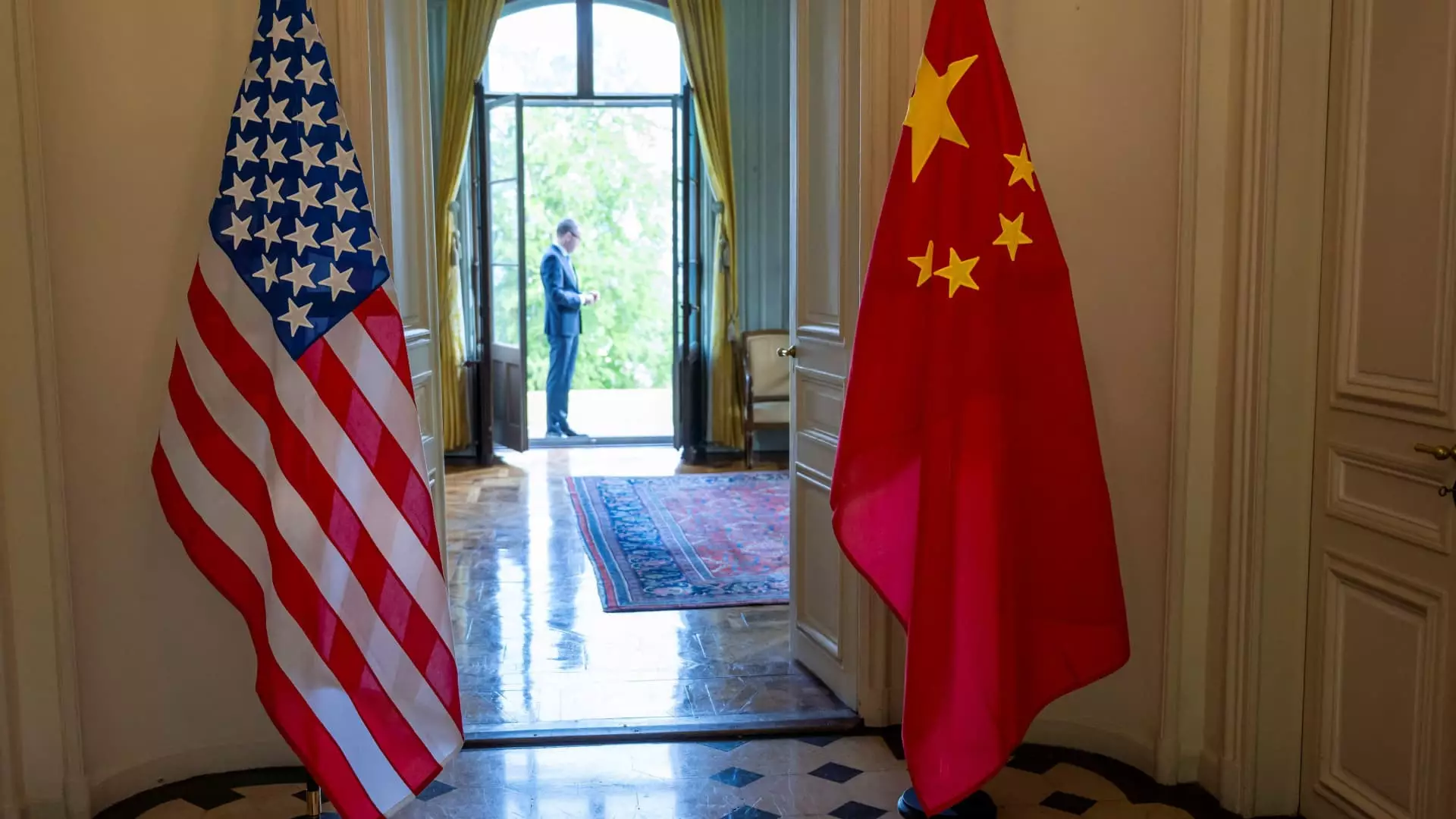The current state of U.S.-China trade negotiations can best be characterized as stagnant—a troubling reality underscored by Treasury Secretary Scott Bessent’s recent comments on Fox News. Although he remains optimistic about potential talks in the near future, the prevailing sentiment is one of frustration and uncertainty. Trade tensions—once a mere skirmish—have escalated into a formidable confrontation, fraught with the possibility of economic repercussions for both nations. This situation begs for decisive leadership, for the stakes are too high to allow complacency to dictate the course of events.
Inconsistent Strategies and Misguided Moves
It is essential to dissect what has led to this snail-paced dialogue between these economic giants. Bessent highlights the complexities at play, yet one cannot help but notice a glaring inconsistency: while attempts at alleviating tariffs were made, the U.S. continues to impose technological restrictions on China. This dual approach has likely exacerbated feelings of distrust and resentment on China’s part, quite naturally prompting them to adopt a defensive posture. Instead of engaging in constructive dialogue, both nations find themselves entangled in a vicious cycle of retaliatory measures and misunderstandings, where actions contradict stated intentions.
The 90-day tariff rollback while encouraging, feels more like a temporary band-aid on a festering wound that requires deep surgical intervention. The complexities of international trade demand holistic solutions rather than short-term fixes. Merely delaying tariff increases does not address the underlying issues that exist between the U.S. and China; the mistrust continues to brew, hampered by unilateral decisions that further alienate both parties.
Leadership and Direct Communication
Bessent suggests that the resolve of both leaders is paramount to moving negotiations forward. He insists that meaningful change can only arise from direct dialogues between high-profile figures like President Trump and President Xi Jinping. However, it’s troubling that both leaders haven’t yet resumed their conversations, despite the existence of clear economic incentives for cooperation. The last chat took place in January, a gap that has become increasingly problematic as decisions affecting millions of lives and jobs hover in limbo.
There is a pressing need for eloquent diplomacy and communication, yet it remains an elusive goal. Trump’s forays into isolationist policies do little to facilitate constructive engagement. Optimistically awaiting a scheduled call seems muted and passive when both parties should be fostering an environment conducive to negotiations. Effective leadership would require both presidents to not just connect but also align on the foundations of trust and mutual benefit.
China’s Stance and International Implications
China’s reaction to U.S. policies has been predictable yet telling. Beijing’s indignant pushback against chip export controls signifies an assertive position, augmenting their claims over international protocols that govern trade. Their insistence on balancing military and civilian exports points to a significant strategic initiative—one meant to showcase strength even in vulnerability. Beijing’s ambiguity regarding the fate of rare earth exports further underscores this complexity, suggesting that they are far from ready to capitulate on critical issues.
Moreover, the nature of U.S.-China negotiations isn’t contained solely within economics; it’s intrinsically linked to broader geopolitical dynamics. Every action taken impacts not just these two nations but influences global markets and alliances. The revocation of visas for Chinese students by the Trump administration illustrates the intersection of trade and foreign policy—leading to an environment of heightened tension that ultimately drives a wedge deeper into bilateral relations.
A Pivotal Moment for Global Leadership
In moments like these, a failure to navigate the tense waters of trade may not only hinder economic growth but also erode the fabric of international cooperation. The reality remains stark: both the U.S. and China stand at a crossroads that will define the economic landscape for decades to come. A proactive willingness to engage through honest dialogue must replace the reactive posturing that has characterized recent months.
The call for both parties to embrace a culture of creativity over conflict isn’t just idealistic; it’s necessary. Their legacy will not be dictated solely by numbers on a trade balance sheet but by their ability to foster environments of collaboration in a world that increasingly demands it. It is time for decisive and transformative leadership to break this paralysis and engage in a new chapter of U.S.-China relations—one rooted in trust, dialogue, and a shared commitment to a more stable global economy.

